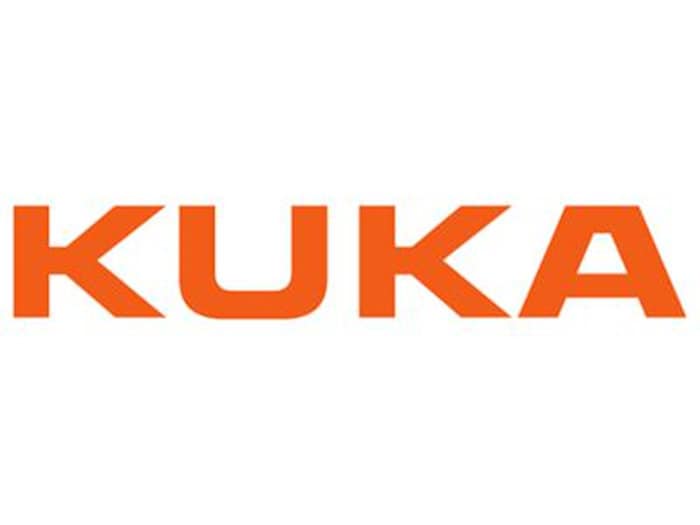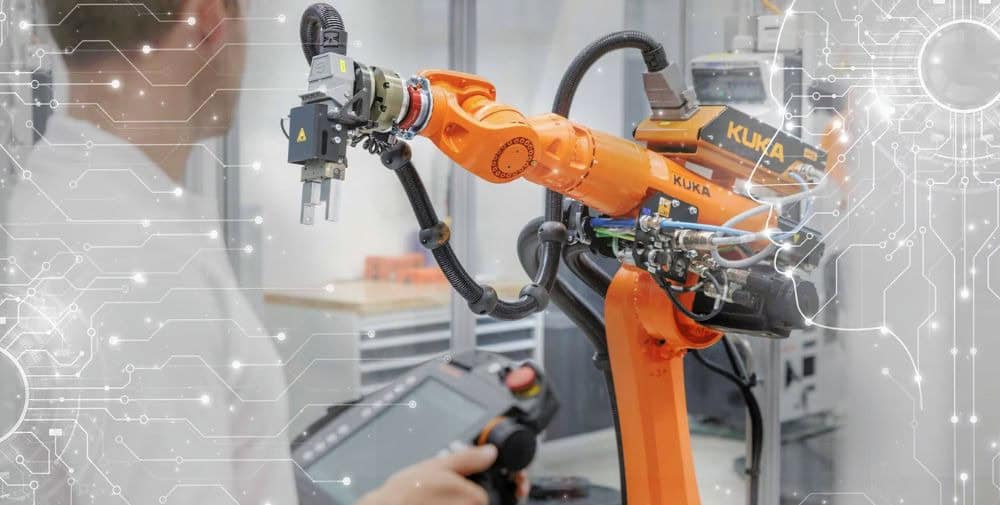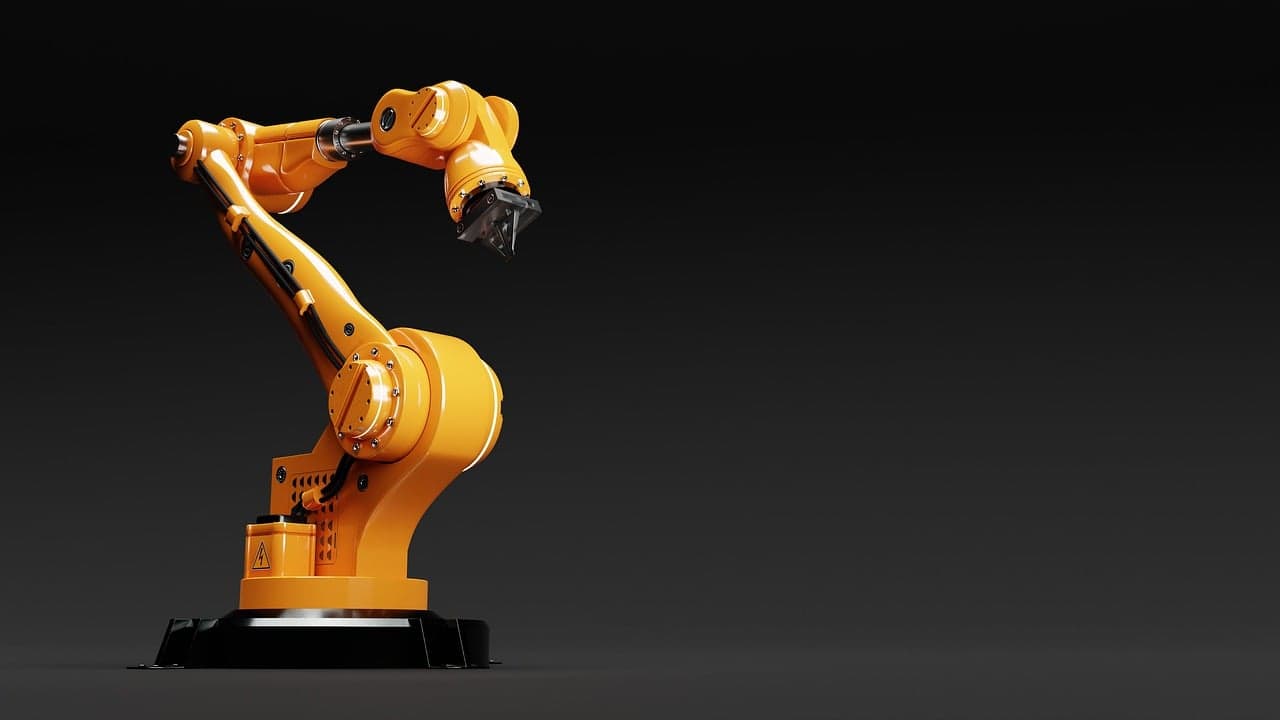
Currently, everything revolves around chatbots. With ChatGPT, the topic of artificial intelligence (AI) has become socially relevant and much discussed in a very short space of time. Industry has been researching this topic for several years. One focus: robot programming. “To a large extent, programming a robot for a task is still reserved for experts,” says Roland Ritter, Platform Program Manager Simulation at KUKA. “This is precisely why we are working on an AI chatbot that translates a simple voice command into programming code.” The AI model then generates the code that causes the robot to do exactly that from ‘Grab the components one by one and place them in a U-shape on the table’.
At the moment, all of this is still happening in a simulated environment. “We could transfer the AI-generated code to the robot controller, but that is currently still too unsafe. The entire industry agrees on this,” explains Ritter. The robot’s digital twin steps in to check whether the AI-generated robot program is error-free.
KUKA trains AI chatbot with countless programming codes
The AI chatbot was fed countless data by KUKA. There is plenty of it, as the Augsburg-based company has had its in-house programming language ‘KUKA Robot Language (KRL)’ on the market for decades. All these robot programs are used to train the AI model. In the next step, KUKA is working on passing the AI chatbot on to customers so that experience can be gathered on how customers formulate a voice command to the robot.
“It is interesting to note that AI models do not necessarily get better with more training. It is important to find the right balance here so that the training data remains at a high quality level,” explains Roland Ritter, Platform Program Manager Simulation at KUKA.
AI model from Swisslog recognizes waste and distinguishes shampoo from shower gel
Food companies such as REWE, drugstore giants such as DM and companies from the pharmaceutical industry are among the customers of Swisslog, KUKA’s Swiss intralogistics company.
On average, these customers have several 10,000 different products in their product ranges, packed in bags, boxes or even without outer packaging. “Every day, these different items have to be picked, i.e. put together for a customer or delivery order – and with as few errors as possible,” says Niklas Goddemeier. He is Head of Research & Development at the Robogistic Product Center at Swisslog. “To ensure that the individual products are put together correctly and no leftover packaging finds its way to the customer, we have trained an AI model so that it can not only recognize waste, but also distinguish shampoo bottles from shower gel bottles.”
AI, camera and robot: perfect interaction for higher quality
However, the AI model alone cannot achieve this. The Swisslog product ItemPiQ is used. ItemPiQ is an AI and camera-supported item picking robot. It can change its gripper autonomously and thus adapt to different packaging and products. Swisslog has been working for some time on using AI models to improve grip quality.
It goes without saying that AI support is an obvious choice for image-based robot systems. The only question that remains at the moment is: how do I allow such systems to continue learning? In summer, the customer probably has a lot of products in bags, in winter in boxes. So how do you ensure that the AI doesn’t forget how the gripper on the robot arm has to grip boxes in winter? This topic of “model updates” is currently still on many people’s minds.
– – – – – –
Further links
👉 www.kuka.com
Photo: Kuka




